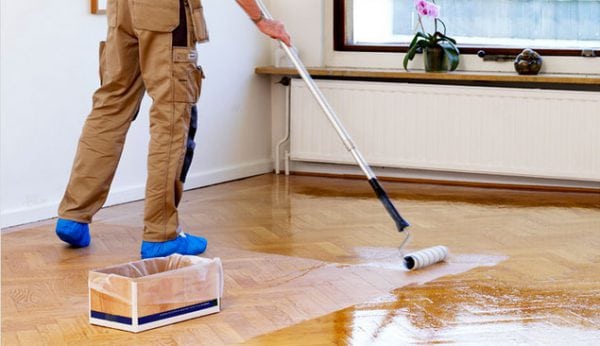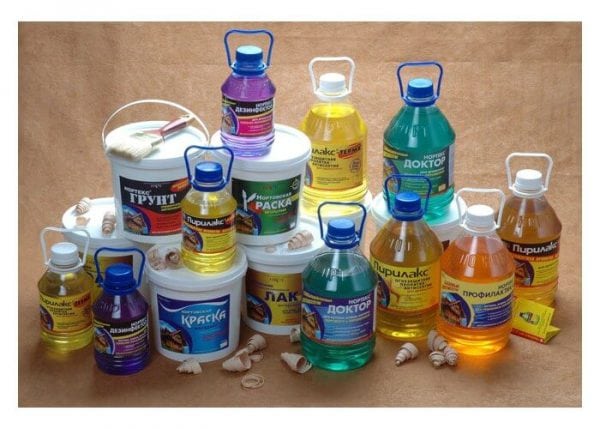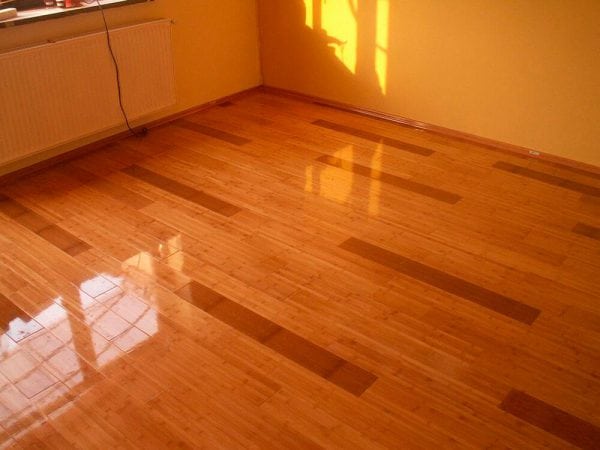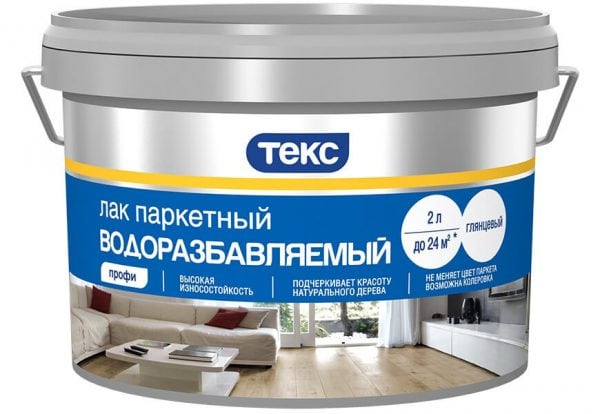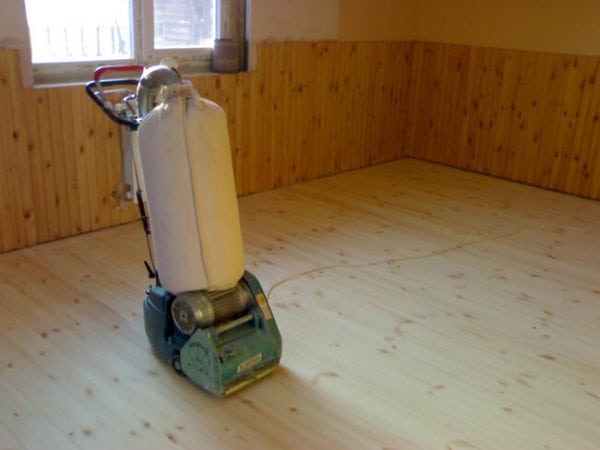The last parquet strip has been laid, and I really want to keep this beauty longer. But how to do that? How can I cover the floor so that it can be protected from darkening, abrasion for a long time, but at the same time the coating is non-toxic? In this case, the best solution is a water varnish for the floor.
- Composition
- Advantages and disadvantages of water-soluble decorative coatings
- How to choose
- How to use water-soluble mixtures
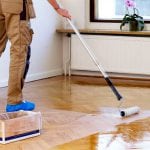
The use of water-based varnishes is able to provide maximum protection for the wooden floor from darkening and abrasion. In addition, they have no pungent odor, are environmentally friendly, it is very easy to care for such a coating.
to contents ↑Composition
Water-soluble varnish mixtures (most often they include an acrylic or alkyd-urethane component), consist of the smallest water particles, emulsifiers and solvents. In the process of drying of such a coating, water with a solvent evaporates, leaving a strong protective film. Conventionally, they are divided into three varieties:
- solvent free;
- having up to 5% solvent;
- The basis includes up to 15% solvent.
Advantages and disadvantages of water-soluble decorative coatings
Due to the fact that the main component of these floor coverings is water, and not organic solvents, they have several advantages:
- Environmental friendliness. They are non-toxic, they can be used even for floors in the nursery.
- Profitability. All formulations have a relatively low cost and low consumption.
- High wear resistance. If there are still additives at the base of the varnish, this further increases the strength.
- No pungent odor even after application.
- Drying speed. The floor surface can be operated in a day, but the final strength of the protective film is reached only after a week.
- Fire safety. They can be used even near operating heating and other appliances.
- Aesthetics. Water-soluble varnishes provide the floor with a beautiful appearance, emphasizing the unique pattern of the wooden surface.
The disadvantages of water-soluble varnish coatings include:
- "Capriciousness" to application tools. High-quality work can only be done using a roller. Do not use a spray gun or brush for this purpose.
- The need for constant humidification during work. The strongest protective film is formed if, during the use of water-based mixtures, the humidity in the room was about 50%. For this purpose, water sprayers must be used during the application process.
- The need to provide quality protection to apply several layers of coating.
How to choose
When choosing a water-based varnish to cover a wooden floor, you need to take into account the load on it:
- If this is a room with low traffic (bedroom), where the load is minimal, then you can buy a single-component composition.It is completely ready for use and does not require the addition of other components.
- For rooms with a high load (kitchen, corridor, living room), it is better to purchase a two-component varnish composition, consisting of a hardener and a base, which are mixed before use, as indicated in the instructions, and then applied to the prepared surface. The use of such compositions provides high strength and protection of wooden parquet. The mixture must also be used for pine or larch boards in all rooms.
to contents ↑Various antiseptics and antifungal drugs can also be added to the base of the solution. Such products are best used in rooms with high humidity.
How to use water-soluble mixtures
The technology for applying water-based mixtures is similar to working with other paints and varnishes, but, nevertheless, there are some differences. In order to obtain a high-quality durable coating, it is necessary to observe the stages of work:
- Wooden surfaces are thoroughly cleaned, if restoration takes place, the layer of old paint or varnish is completely removed, after which the floor is cleaned with a “sandpaper” or a grinding machine. If this is a freshly laid parquet or a new board, then it is enough to remove dirt from them. It is best to rinse with water and then allow to dry well.
- If there are defects on the floor, then they must be repaired with putty, and indeed, it is better to pre-loop old floors.
- Further, it should be done depending on the basis of the varnish. If the mixture is made on the basis of a primer, then a preliminary priming is not required. But, nevertheless, to ensure the maximum quality of application, it is better to prime the surface. To perform the primer, it is better to select funds on the same basis as the varnish.
- It takes a day to completely dry the primer mixes, after which the surface needs to be slightly cleaned with sandpaper and dust removed. You can use an ordinary vacuum cleaner for this.
- The surface is ready, now you need to prepare the roller, container, mix, if necessary, the components of the solution.
- When working with a roller, it is necessary to make cross-wise movements; during movements along the varnish it will be applied, and across it will be leveled.
- Application of the solution should be smooth, without jerking. This will contribute to its uniform distribution on the boards.
- After the first layer has dried (usually this time is 2-4 hours), proceed with the subsequent application. To ensure durability and quality protection, 3-5 layers should be applied.
- A beautiful floor surface is ready. Now you need to wait a week, after which it will be possible to put furniture in the room without fear of scratching the floor.
The use of waterborne varnishes for parquet is not in vain very much in demand. After all, they are non-toxic in operation and with full compliance with all stages of surface treatment can last 3-5 years, reliably protecting wood from moisture, ultraviolet rays, darkening and other aggressive environmental influences.

